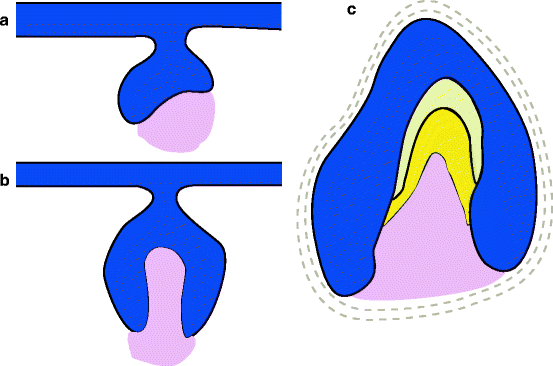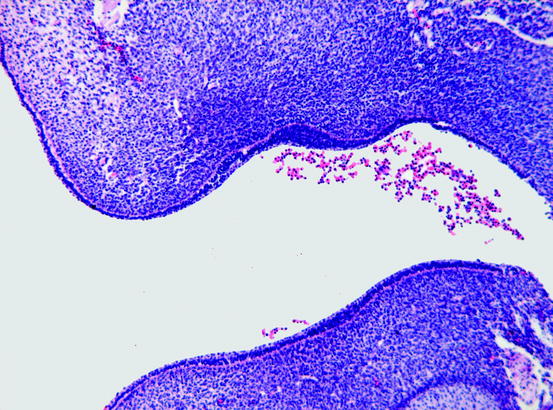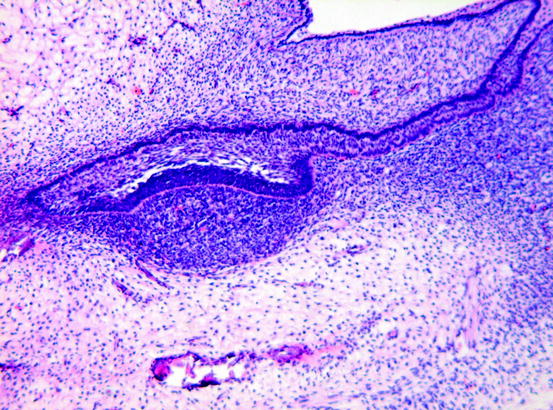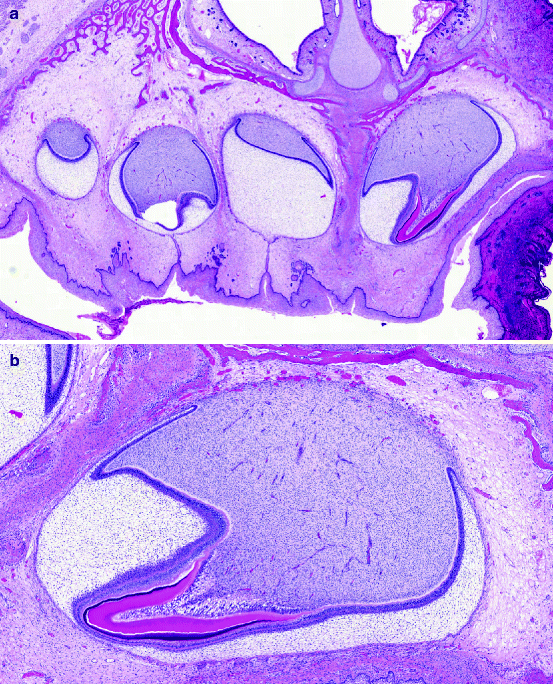(1)
Department of Pathology, Radboud University Nijmegen Medical Center, Nijmegen, The Netherlands
Abstract
Teeth develop from epithelial cells from the mucosal lining of the oral cavity and cranial neural crest-derived ectomesenchymal cells. These latter cells originate at the ectodermal/neuroectodermal junction of the developing brain, extending rostrally from the caudal boundary of the hindbrain and neural tube to the midbrain and caudal forebrain. They give rise to most connective tissues in the craniofacial region including the bones of the calvarium, face and jaws. So, these bones that are formed by mesenchymal cells have an ectodermal/neuroectodermal ancestry – that is why they are also known as ectomesenchyme. The oral epithelium appears to guide the very early stages of tooth formation and sends signals to the adjacent ectomesenchyme inducing odontogenic potential in the latter. Thereafter, the odontogenic ectomesenchyme takes the lead.
Teeth develop from epithelial cells from the mucosal lining of the oral cavity and cranial neural crest-derived ectomesenchymal cells. These latter cells originate at the ectodermal/neuroectodermal junction of the developing brain, extending rostrally from the caudal boundary of the hindbrain and neural tube to the midbrain and caudal forebrain. They give rise to most connective tissues in the craniofacial region including the bones of the calvarium, face and jaws. So, these bones that are formed by mesenchymal cells have an ectodermal/neuroectodermal ancestry – that is why they are also known as ectomesenchyme [1–4]. The oral epithelium appears to guide the very early stages of tooth formation and sends signals to the adjacent ectomesenchyme inducing odontogenic potential in the latter [5, 6]. Thereafter, the odontogenic ectomesenchyme takes the lead [7].
Whether tooth germs will develop into incisors, canines, premolars or molars is determined before any histologically visible sign of tooth development. Genetic pathways control development of the various groups of teeth. In the past, there has been debate whether this dental diversity may be the result of prepatterned cranial neural crest cell populations that lead to the formation of the various tooth types or whether the morphological variety within the dentition is due to different responses of the ectomesenchyme to signals from the oral epithelium, the dentition pattern being determined by a prepatterning of either the oral epithelium or the cranial neural crest-derived cells. The current opinion is that the oral epithelium not only initiates tooth formation but also establishes the number and shape of teeth in the oral cavity [7].
From a histological point of view, the process of tooth formation starts with the formation of the dental lamina, a sheet of epithelial cells extending from the lining of the oral cavity into the underlying ectomesenchyme. In this dental lamina, focal budlike thickenings determine the sites of the future teeth, 20 for the deciduous dentition and 32 for the permanent one, and together with a surrounding aggregation of ectomesenchymal cells, they represent the earliest stage of the tooth germ (Figs. 1.1a and 1.2).



Fig. 1.1
Diagram showing consecutive stages of early tooth formation. (a) Bud stage, (b) cap stage and (c) bell stage. Epithelium shown in blue, ectomesenchyme in pink, dentin in yellow and enamel in grey

Fig. 1.2
Epithelial thickening of oral epithelium with underlying ectomesenchyme
Subsequently, the epithelial bud transforms into a cap and, from now on, is called enamel organ. Due to the formation of a concavity along the inner surface, the cap transforms into a bell. Ectomesenchymal cells lying within this concavity form the dental papilla that will become the dental pulp, the soft tissue core of the teeth. Other ectomesenchymal cells surround the enamel organ and form the dental follicle, the fibrous bag that invests the tooth germ and separates it from the adjacent jaw bone. Within the bell-shaped enamel organ, three different components are discerned: the inner enamel epithelium facing the dental papilla, the outer enamel epithelium lying adjacent to the dental follicle and the intervening loose stellate epithelium that is called the stellate reticulum (Figs. 1.1b, 1.3, and 1.4a, b).



Fig. 1.3
Cap stage of tooth germ showing enamel organ composed of loose stellate reticulum bordered by inner enamel epithelium facing the ectomesenchymal condensation that will develop into the dental papilla (see Fig. 1.4)

Fig. 1.4
(a) Frontal section of fetal maxilla showing tooth germs in varying stages of development. (b) At the tip of the dental papilla, deposition of enamel (purple) and dentin (pink) has started
Stay updated, free dental videos. Join our Telegram channel

VIDEdental - Online dental courses


